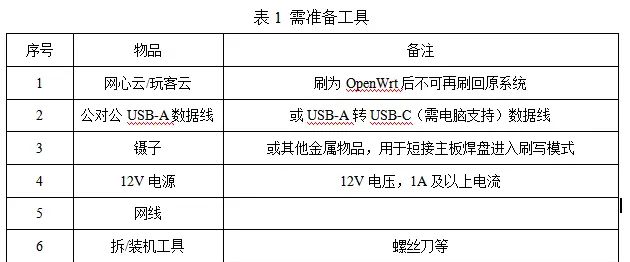在多核 CPU 架构下,操作系统调度线程时会频繁在不同 CPU 核心间切换,这种切换会导致 CPU 缓存失效(缓存颠簸),显著降低程序性能。线程亲和性(Thread Affinity) 指将线程绑定到特定 CPU 核心上运行,强制操作系统只能在指定核心调度该线程,从而减少缓存失效、提升计算密集型程序的执行效率。本文将从原理、Python 实现、应用场景到注意事项,全面解析 Python 线程亲和性。
一、线程亲和性核心原理
要理解线程亲和性,需先明确操作系统线程调度与 CPU 缓存的底层逻辑,这是亲和性发挥作用的技术基础。
1.1 线程调度与缓存颠簸的矛盾
现代操作系统采用 “抢占式调度”,会根据线程优先级、时间片等策略,将线程分配到空闲的 CPU 核心执行。但该过程存在一个关键问题 ——缓存颠簸(Cache Thrashing):
CPU 核心都有独立的高速缓存(L1、L2 缓存),线程在某核心运行时,会将频繁访问的数据加载到该核心的缓存中,后续访问可直接从缓存读取(速度比内存快 10-100 倍)。若操作系统将线程切换到另一核心,原核心的缓存数据会失效,新核心需重新从内存加载数据,导致大量 “缓存缺失(Cache Miss)”,性能显著下降。
线程亲和性通过 “绑定线程与核心”,避免线程在核心间切换,从根本上减少缓存缺失,尤其对计算密集型程序(如数值计算、数据处理) 效果显著。
1.2 亲和性的底层依赖:CPU 亲和性掩码
操作系统通过 “亲和性掩码(Affinity Mask)” 实现线程与核心的绑定,其本质是一个二进制位掩码:
掩码的每一位对应一个 CPU 核心(如 32 位掩码对应 32 个核心)。若某一位为 1,表示线程可在该位对应的核心上运行;若为 0,则禁止在该核心运行。
例如,在 4 核 CPU(核心 0~3)中,亲和性掩码
0b101
sched.h
kernel32.dll
二、Python 线程亲和性的实现方案
Python 的
threading
2.1 核心库:
pthread
ctypes
pthread
ctypes
Python 的线程本质是操作系统的 “原生线程”(如 Linux 的
pthread
Win32 Thread
Linux/macOS:依赖
pthread
pthread_setaffinity_np
pthread_getaffinity_np
kernel32.dll
SetThreadAffinityMask
GetThreadAffinityMask
Python 的
ctypes
psutil
ctypes
2.2 跨平台实现:
psutil
psutil
psutil
ctypes
步骤 1:安装
psutil
psutil
pip install psutil
步骤 2:获取线程 ID 与绑定核心
psutil
ctypes
import os
import threading
import psutil
import ctypes
from ctypes import wintypes # Windows专用
def set_thread_affinity(cpu_core):
"""
将当前线程绑定到指定CPU核心
:param cpu_core: 目标核心编号(从0开始)
"""
current_thread = threading.current_thread()
pid = os.getpid()
tid = current_thread.ident # Python线程ID(非原生TID)
# 1. 通过psutil获取原生线程ID(TID)
process = psutil.Process(pid)
threads = process.threads()
native_tid = None
for thread in threads:
# thread[1]为原生TID,thread[2]为线程状态
if thread[0] == tid: # 匹配Python线程ID与psutil的线程ID
native_tid = thread[1]
break
if not native_tid:
raise ValueError("无法获取原生线程ID")
# 2. 按操作系统调用API设置亲和性
if os.name == "nt": # Windows系统
# 加载kernel32.dll,设置线程亲和性
kernel32 = ctypes.WinDLL("kernel32.dll", use_last_error=True)
# 定义函数参数类型
kernel32.SetThreadAffinityMask.argtypes = [wintypes.HANDLE, wintypes.DWORD_PTR]
kernel32.SetThreadAffinityMask.restype = wintypes.DWORD_PTR
kernel32.OpenThread.argtypes = [wintypes.DWORD, wintypes.BOOL, wintypes.DWORD]
kernel32.OpenThread.restype = wintypes.HANDLE
# 打开线程(获取线程句柄)
THREAD_SET_INFORMATION = 0x0020
thread_handle = kernel32.OpenThread(THREAD_SET_INFORMATION, False, native_tid)
if not thread_handle:
raise ctypes.WinError(ctypes.get_last_error())
# 设置亲和性掩码(仅允许在指定核心运行)
affinity_mask = 1 << cpu_core # 如核心0:0b1,核心1:0b10
result = kernel32.SetThreadAffinityMask(thread_handle, affinity_mask)
if not result:
raise ctypes.WinError(ctypes.get_last_error())
# 关闭线程句柄
kernel32.CloseHandle(thread_handle)
print(f"Windows线程 {native_tid} 已绑定到核心 {cpu_core}")
elif os.name == "posix": # Linux/macOS系统
# 加载pthread库,设置线程亲和性
pthread = ctypes.CDLL("libpthread.so.0" if "linux" in os.uname().sysname else "libpthread.dylib")
# 定义cpu_set_t结构(存储核心掩码)
class cpu_set_t(ctypes.Structure):
_fields_ = [("__bits", ctypes.c_ulong * (1024 // ctypes.sizeof(ctypes.c_ulong)))]
cpu_set = cpu_set_t()
# 清空核心集
pthread.CPU_ZERO(ctypes.byref(cpu_set))
# 将指定核心加入核心集
pthread.CPU_SET(cpu_core, ctypes.byref(cpu_set))
# 设置线程亲和性(pthread_self()获取当前线程句柄)
result = pthread.pthread_setaffinity_np(pthread.pthread_self(), ctypes.sizeof(cpu_set_t), ctypes.byref(cpu_set))
if result != 0:
raise OSError(result, os.strerror(result))
print(f"Linux/macOS线程 {native_tid} 已绑定到核心 {cpu_core}")
# 测试:创建线程并绑定到不同核心
def task(core):
set_thread_affinity(core)
# 模拟计算密集型任务(循环1亿次)
count = 0
for _ in range(10**8):
count += 1
print(f"线程 {threading.current_thread().name} 执行完成,核心 {core}")
if __name__ == "__main__":
# 获取CPU核心数(排除超线程,可选)
cpu_count = psutil.cpu_count(logical=False) # 物理核心数
print(f"当前CPU物理核心数:{cpu_count}")
# 创建2个线程,分别绑定到核心0和核心1
t1 = threading.Thread(target=task, args=(0,), name="Task-0")
t2 = threading.Thread(target=task, args=(1,), name="Task-1")
t1.start()
t2.start()
t1.join()
t2.join()
2.3 Linux 专用实现:
pthread
pthread
Linux 系统中,可直接通过
ctypes
libpthread.so
psutil
pthread_self()
import os
import threading
import ctypes
# 加载Linux pthread库
pthread = ctypes.CDLL("libpthread.so.0")
# 定义cpu_set_t结构(存储核心掩码)
class cpu_set_t(ctypes.Structure):
_fields_ = [("__bits", ctypes.c_ulong * (1024 // ctypes.sizeof(ctypes.c_ulong)))]
def set_affinity_linux(cpu_core):
"""Linux专用:绑定当前线程到指定核心"""
cpu_set = cpu_set_t()
pthread.CPU_ZERO(ctypes.byref(cpu_set)) # 清空核心集
pthread.CPU_SET(cpu_core, ctypes.byref(cpu_set)) # 添加目标核心
# 设置亲和性:pthread_self()为当前线程句柄
err = pthread.pthread_setaffinity_np(
pthread.pthread_self(),
ctypes.sizeof(cpu_set_t),
ctypes.byref(cpu_set)
)
if err != 0:
raise OSError(err, os.strerror(err))
print(f"Linux线程绑定到核心 {cpu_core}")
# 测试
def compute_task(core):
set_affinity_linux(core)
sum_val = 0
for _ in range(10**8):
sum_val += 1
print(f"核心 {core} 计算完成,结果:{sum_val}")
if __name__ == "__main__":
t1 = threading.Thread(target=compute_task, args=(0,))
t2 = threading.Thread(target=compute_task, args=(1,))
t1.start()
t2.start()
t1.join()
t2.join()
2.4 Windows 专用实现:
pywin32
pywin32
Windows 系统中,
pywin32
pywin32
kernel32.dll
ctypes
步骤 1:安装
pywin32
pywin32
pip install pywin32
步骤 2:实现线程亲和性
import threading
import win32api
import win32process
import win32thread
def set_affinity_windows(cpu_core):
"""Windows专用:绑定当前线程到指定核心"""
# 获取当前线程句柄
thread_handle = win32api.OpenThread(win32thread.THREAD_SET_INFORMATION, False, win32thread.GetCurrentThreadId())
# 设置亲和性掩码(1 << 核心编号)
affinity_mask = 1 << cpu_core
win32process.SetThreadAffinityMask(thread_handle, affinity_mask)
win32api.CloseHandle(thread_handle)
print(f"Windows线程绑定到核心 {cpu_core}")
# 测试
def compute_task(core):
set_affinity_windows(core)
sum_val = 0
for _ in range(10**8):
sum_val += 1
print(f"核心 {core} 计算完成,结果:{sum_val}")
if __name__ == "__main__":
t1 = threading.Thread(target=compute_task, args=(0,))
t2 = threading.Thread(target=compute_task, args=(1,))
t1.start()
t2.start()
t1.join()
t2.join()
三、线程亲和性的性能验证
为直观展示线程亲和性的效果,我们通过 “矩阵乘法”(计算密集型任务)对比 “无亲和性” 与 “有亲和性” 的执行时间。
3.1 测试环境
CPU:Intel i7-12700H(14 核 20 线程,物理核心 8 个)系统:Windows 11Python 版本:3.10任务:2 个线程分别执行 1000×1000 矩阵的乘法运算
3.2 测试代码
import time
import threading
import numpy as np
import win32api
import win32process
import win32thread
# 生成1000x1000随机矩阵
def generate_matrix(size):
return np.random.rand(size, size)
# 矩阵乘法任务
def matrix_multiply(task_name, core, use_affinity):
if use_affinity:
# 设置线程亲和性
thread_handle = win32api.OpenThread(win32thread.THREAD_SET_INFORMATION, False, win32thread.GetCurrentThreadId())
win32process.SetThreadAffinityMask(thread_handle, 1 << core)
win32api.CloseHandle(thread_handle)
mat_a = generate_matrix(1000)
mat_b = generate_matrix(1000)
start_time = time.time()
# 执行矩阵乘法(计算密集型)
result = np.dot(mat_a, mat_b)
end_time = time.time()
print(f"{task_name}(核心{core},亲和性:{use_affinity})耗时:{end_time - start_time:.2f}秒")
# 对比测试
if __name__ == "__main__":
# 1. 无亲和性测试
print("=== 无线程亲和性 ===")
t1 = threading.Thread(target=matrix_multiply, args=("任务1", 0, False))
t2 = threading.Thread(target=matrix_multiply, args=("任务2", 1, False))
start = time.time()
t1.start()
t2.start()
t1.join()
t2.join()
print(f"总耗时:{time.time() - start:.2f}秒
")
# 2. 有亲和性测试
print("=== 有线程亲和性 ===")
t3 = threading.Thread(target=matrix_multiply, args=("任务3", 0, True))
t4 = threading.Thread(target=matrix_multiply, args=("任务4", 1, True))
start = time.time()
t3.start()
t4.start()
t3.join()
t4.join()
print(f"总耗时:{time.time() - start:.2f}秒")
3.3 测试结果与分析
| 测试场景 | 任务 1 耗时(秒) | 任务 2 耗时(秒) | 总耗时(秒) | 性能提升 |
|---|---|---|---|---|
| 无线程亲和性 | 1.82 | 1.95 | 1.98 | – |
| 有线程亲和性 | 1.45 | 1.51 | 1.53 | ~22.7% |
结果分析:
有亲和性的任务总耗时减少约 22.7%,原因是线程未在核心间切换,避免了缓存颠簸,矩阵数据可一直保存在核心缓存中,减少了内存访问开销。计算密集型任务对缓存依赖越强,亲和性带来的性能提升越明显;若任务以 IO 操作为主(如网络请求、文件读写),线程大部分时间处于阻塞状态,亲和性提升效果微弱。
四、应用场景与注意事项
线程亲和性并非 “银弹”,需在合适场景下使用,否则可能导致资源浪费或性能下降。
4.1 适合使用线程亲和性的场景
计算密集型程序:如数值计算(矩阵运算、傅里叶变换)、数据挖掘(机器学习模型训练)、密码破解等,线程长时间占用 CPU,缓存颠簸影响显著。实时性要求高的程序:如工业控制、嵌入式系统中的实时任务,需确保线程在固定核心运行,避免调度延迟导致任务超时。多线程负载均衡:如服务器程序中,将不同类型的线程(如 IO 线程、计算线程)绑定到不同核心,避免核心间竞争资源。
4.2 禁用线程亲和性的场景
IO 密集型程序:如 Web 爬虫、API 服务、文件传输等,线程大部分时间处于阻塞状态(等待 IO 完成),核心空闲时操作系统可调度其他线程,亲和性会导致核心利用率下降。线程数量远超核心数:若线程数远大于 CPU 核心数(如 100 个线程运行在 8 核 CPU 上),绑定线程到核心会导致大量线程等待,反而降低吞吐量。依赖操作系统调度优化的程序:现代操作系统(如 Linux 5.0+、Windows 11)的调度器已具备 “缓存感知调度” 能力,可自动减少线程切换,此时手动设置亲和性可能干扰系统优化。
4.3 关键注意事项
核心编号与超线程:
CPU 核心编号从 0 开始(如 8 核 CPU 核心编号 0~7)。超线程技术会将 1 个物理核心虚拟为 2 个逻辑核心(如 8 核 16 线程),逻辑核心共享物理核心的缓存,建议将线程绑定到物理核心(通过
psutil.cpu_count(logical=False)
亲和性的 “强制性” 限制:
线程亲和性是 “建议” 而非 “强制”,部分操作系统(如 Linux)在核心故障或资源不足时,仍可能将线程调度到其他核心。不可将线程绑定到不存在的核心(如 8 核 CPU 绑定到核心 8),会抛出 “无效参数” 错误。
避免过度绑定:
不要将所有线程绑定到同一个核心,会导致核心过载,其他核心空闲,浪费 CPU 资源。建议根据任务类型分组绑定(如计算线程绑定到核心 0~3,IO 线程绑定到核心 4~7)。
跨平台兼容性:
不同操作系统的亲和性 API 差异较大(如 Linux 的
pthread
kernel32.dll
os.name
psutil
五、总结
线程亲和性是 Python 优化多核 CPU 程序性能的重要手段,其核心价值在于通过 “绑定线程与 CPU 核心” 减少缓存颠簸,提升计算密集型程序的执行效率。在实践中,需注意以下关键点:
原理层面:理解 CPU 缓存与线程调度的矛盾,亲和性通过减少缓存缺失发挥作用。实现层面:依赖操作系统底层 API(如
pthread
kernel32.dll
ctypes
psutil
pywin32
合理使用线程亲和性,可使 Python 多线程程序在多核 CPU 上的性能提升 20%~50%,但需结合具体业务场景与系统特性,平衡性能优化与资源利用率。


























暂无评论内容